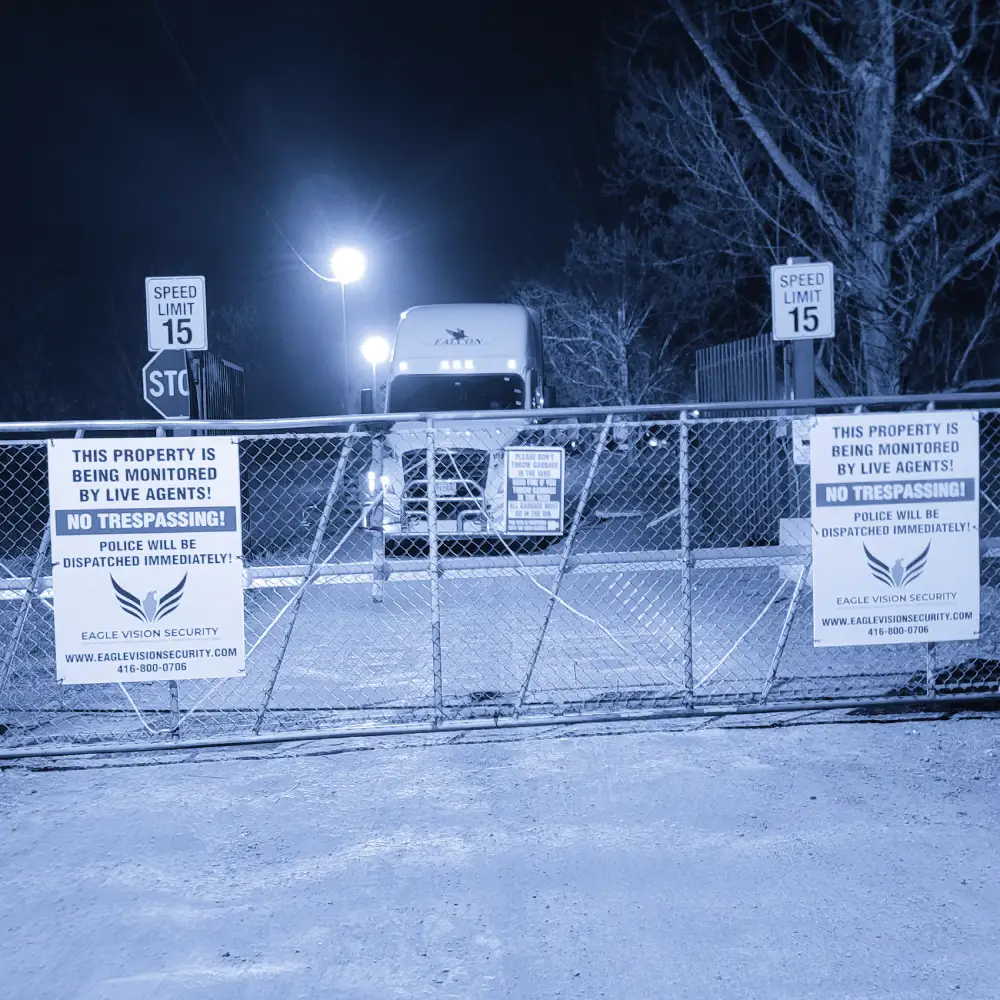
In today’s logistics and transportation industry, truck yards serve as critical hubs where goods are stored, loaded, and transferred for shipment. With valuable cargo, expensive vehicles, and constant activity, truck yards are often a prime target for theft, vandalism, and unauthorized access. That’s why truck yard security has become an essential part of fleet management and supply chain protection. Effective security not only prevents financial losses but also ensures the safety of employees and builds trust with clients.
Why Truck Yard Security Matters
Truck yards are more than just parking lots; they are high-value areas containing trailers, tractors, and shipments worth millions of dollars. Criminals view these sites as opportunities to steal cargo, siphon fuel, or tamper with vehicles. According to industry reports, cargo theft costs businesses billions of dollars annually, with many incidents occurring in unsecured yards.
Strong truck yard security prevents:
- Cargo theft: Protecting shipments from being stolen before delivery.
- Fuel theft: Preventing unauthorized siphoning from trucks.
- Vehicle damage: Reducing vandalism or tampering with vehicles.
- Liability risks: Avoiding accidents caused by trespassers or sabotage.
- Operational delays: Ensuring trucks remain in working condition and shipments are not disrupted.
By investing in comprehensive security systems, companies not only save money but also maintain smoother operations and copyright their reputation in the competitive logistics market.
Key Components of Truck Yard Security
To secure a truck yard effectively, companies need a layered security approach that combines physical barriers, technology, and well-trained personnel. Below are the main components of a strong truck yard security system:
1. Perimeter Fencing and Access Control
The first line of defense is the perimeter. Tall, durable fencing with anti-climb features helps deter intruders. Security gates with controlled entry and exit points allow only authorized personnel and vehicles to access the yard. Access control systems, such as key cards, PIN codes, or biometric scanners, ensure that only employees and approved visitors can enter.
2. Surveillance Cameras and Monitoring
Modern truck yards rely heavily on surveillance technology. High-definition CCTV cameras with night vision and motion detection should be strategically placed around entrances, exits, parking areas, and loading docks. Remote monitoring systems allow managers or security teams to watch live feeds 24/7, ensuring quick response to any suspicious activity.
3. Adequate Lighting
Well-lit truck yards discourage intruders and improve the effectiveness of video surveillance. Bright floodlights, especially around entrances, fencing, and parking zones, reduce blind spots and increase visibility for drivers and security staff.
4. On-Site Security Guards
While technology is critical, human presence remains invaluable. Trained security personnel can conduct patrols, inspect vehicles, verify credentials, and respond immediately to emergencies. Guards also act as a visible deterrent to potential criminals.
5. Alarm and Intrusion Detection Systems
Intrusion alarms, motion sensors, and ground-based radar systems help detect unauthorized movement inside the yard. These systems can be integrated with CCTV and access control to trigger alerts for quick action.
6. Vehicle Tracking and Telematics
Equipping trucks with GPS tracking ensures that even if a vehicle is stolen, it can be located quickly. Many fleets use telematics to monitor driver behavior, fuel usage, and truck location in real-time, further enhancing security.
7. Visitor and Driver Screening
All visitors, contractors, and drivers entering the truck yard should be properly logged and verified. ID checks, vehicle inspections, and sign-in systems add an extra layer of accountability.
8. Cybersecurity Measures
In the modern era, security isn’t only physical. Truck yards often rely on connected systems for logistics management, gate control, and monitoring. Protecting these networks from cyberattacks is just as important as guarding against physical threats.
Best Practices for Truck Yard Security
Beyond equipment and personnel, truck yard operators should adopt best practices to strengthen overall safety:
- Regular Training: Train employees and drivers on security protocols, suspicious activity reporting, and emergency procedures.
- Routine Inspections: Conduct frequent audits of security systems, including cameras, locks, and alarm systems.
- Clear Signage: Post visible “No Trespassing” and “Surveillance in Use” signs to deter unauthorized individuals.
- Layered Security: Use multiple defenses (fences, guards, cameras, alarms) instead of relying on a single measure.
- Collaboration with Law Enforcement: Build partnerships with local police for faster response and crime prevention support.
- Incident Reporting System: Implement a structured way to report and analyze security incidents to improve future practices.
Challenges in Truck Yard Security
Despite advancements, truck yard security faces several challenges:
- Large Areas to Monitor: Truck yards can cover vast spaces, making full surveillance difficult.
- Cost of Security Systems: Installing advanced systems can be expensive, especially for small businesses.
- Insider Threats: Employees or contractors with authorized access may still pose risks.
- Evolving Criminal Tactics: Criminals are constantly developing new methods to bypass security measures.
Addressing these challenges requires balancing investment with risk assessment, ensuring the right combination of technology and manpower is deployed.
The Future of Truck Yard Security
Technology continues to reshape how companies secure their assets. Future trends in truck yard security may include:
- Artificial Intelligence (AI): Smarter surveillance systems that detect unusual behavior automatically.
- Drones: Aerial monitoring of large yards for faster response.
- Automated Gates: Faster, safer, and more efficient entry and exit processes.
- Integrated Data Systems: Combining GPS, CCTV, and logistics platforms into one centralized security hub.
These innovations promise to make truck yards safer, more efficient, and more cost-effective to operate.
Conclusion
Truck yard security is no longer optional—it’s a necessity in the fast-paced logistics industry. With valuable cargo and vehicles at risk, companies must adopt a comprehensive approach that includes physical barriers, surveillance technology, trained personnel, and cybersecurity defenses. By doing so, they can reduce theft, improve safety, and ensure smooth operations.
Ultimately, strong security isn’t just about protecting assets; it’s about building trust with clients, safeguarding employees, and keeping the supply chain moving without interruption.